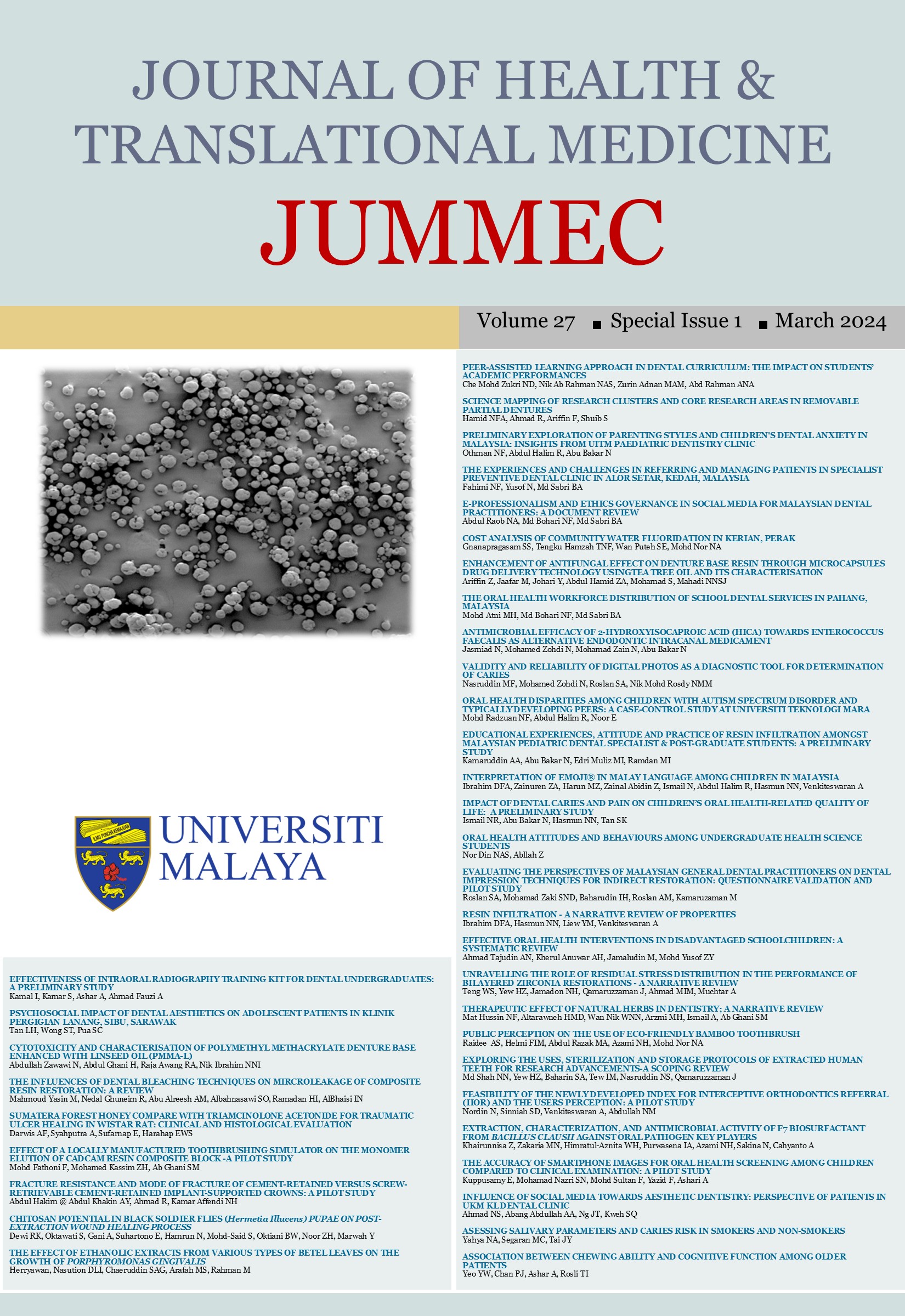ASSESSING SALIVARY PARAMETERS AND CARIES RISK IN SMOKERS AND NON-SMOKERS
Received 2024-03-01; Accepted 2024-03-25; Published 2024-03-26
DOI:
https://doi.org/10.22452/jummec.sp2024no1.27Abstract
Saliva is crucial in maintaining oral health, serving various functions such as protecting oral tissues, cleansing the mouth, and aiding digestion. Salivary composition, including pH, buffering capacity, and protein components, has been associated with oral diseases, including dental caries. Tobacco smoking has detrimental effects on salivary glands, altering saliva composition and potentially increasing the risk of dental caries. This study aimed to investigate the relationship between saliva pH and buffering capacity by smoking status and the relationship between saliva pH and buffering capacity by caries risk. A cross-sectional study was conducted among adult smokers and non-smokers visiting the Dental Polyclinics at Universiti Kebangsaan Malaysia (UKM). Salivary parameters, including pH and buffering capacity, were assessed using GC Saliva Check Buffer kits. Caries risk assessment was performed using the American Dental Association Caries Risk Assessment form. Sociodemographic characteristics, smoking status, and caries risk were analyzed using descriptive statistics and chi-square tests. One hundred subjects participated in the study, with 49 smokers and 51 non-smokers. Smokers showed a higher prevalence of high caries risk compared to non-smokers. The buffering capacity of saliva was significantly lower in smokers compared to non-smokers for both resting and stimulated saliva (p<0.001). Resting (p=0.035) and stimulated (p=0.049) saliva pH was significantly more acidic in smokers than in non-smokers. These findings suggest that smoking status is associated with altered salivary parameters and increased caries risk. Understanding the impact of smoking on saliva composition and caries risk can aid in developing preventive and therapeutic strategies for individuals at high risk of dental decay.
Downloads
Downloads
Published
Issue
Section
License
All authors agree that the article, if editorially accepted for publication, shall be licensed under the Creative Commons Attribution License 4.0 to allow others to freely access, copy and use research provided the author is correctly attributed, unless otherwise stated. All articles are available online without charge or other barriers to access. However, anyone wishing to reproduce large quantities of an article (250+) should inform the publisher. Any opinion expressed in the articles are those of the authors and do not reflect that of the University of Malaya, 50603 Kuala Lumpur, Malaysia.


